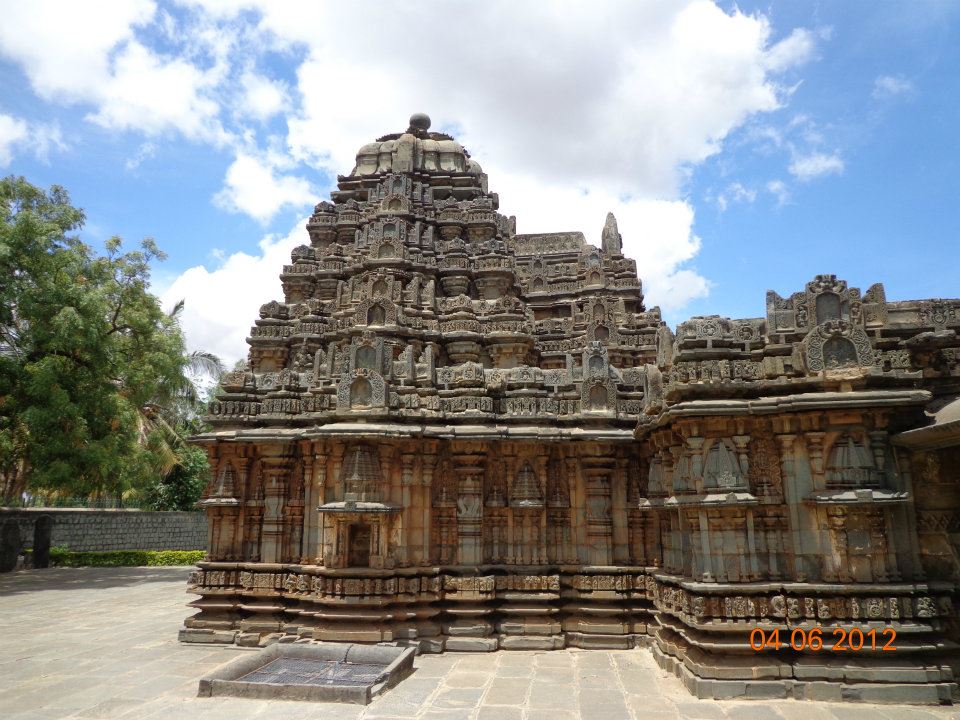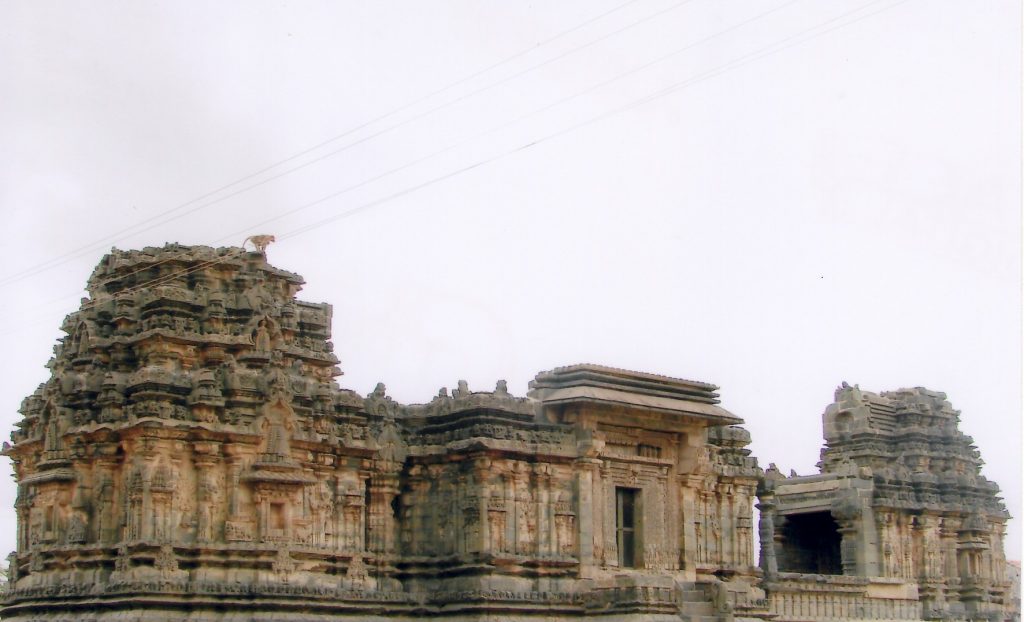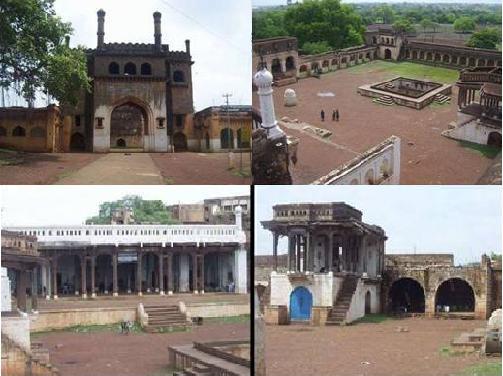Picking up from last week’s Time Travel column, Roopa Pai tells us about what happened after the fall of the Rashtrakutas. Next up, the Chalukyas!
Time Travel – 6
Two weeks ago, we left the Rashtrakutas sitting pretty at their capital of Manyakheta on the banks of the Kagina river, with the great Amoghavarsha Nrupathunga holding sway over a vast empire. After his death in 878 AD, the Rashtrakutas would never again regain such heights of glory. In 972 AD, Manyakheta was sacked by the Paramaras of Malwa, governors that the Rashtrakutas had themselves appointed to help them administer that part of their empire.
The Chalukyas Of Kalyan

The sacking of Manyakheta was watched with keen interest by several feudatories of the Rashtrakutas, who had been biding their time waiting for just such an event to occur. Now that their masters were in disarray, it was a good time for all of them to stake their own claims to the Rashtrakuta throne. The feudatory who eventually emerged successful was a chieftain called Tailapa II. Overthrowing all other contenders, he seized the throne of Manyakheta, re-establishing the Chalukya dynasty, which had lain dormant for over 200 years.
There is some debate among historians as to whether these new Chalukyas were connected at all to the earlier Chalukyas of Badami or whether they were a different dynasty altogether. Be that as it may, these guys found it useful to link themselves to the Chalukyas, since the legend of Pulikesi II and other great Chalukyan kings were still being retold with awe in these parts. Tailapa quickly consolidated his kingdom, conquering the areas between the Narmada and the Kaveri, with great victories against the Gangas and the Paramaras.
By the time Somesvara I came to the throne in 1042, the kingdom had grown considerably. Somesvara moved his capital to Kalyan (today Basavakalyan, in Bidar district), a town near the Bennithora river, and went one better than Tailapa, turning the kingdom into a proper empire. His exploits brought the Chalukyas of Kalyan (also called the Kalyani Chalukyas) into direct confrontation with the other great empire of the south, the Cholas. The Cholas and the Chalukyas would engage in a constant and bitter struggle for supremacy over the next 100 years.
The Beginning Of An Era

It was under Somesvara I’s son, Vikramaditya VI, that the Chalukyas of Kalyan reached the height of their powers. This ambitious young chap had quite a rocky journey to the top, though. First, on his dad’s death, his elder brother, Somesvara II, came to the throne. Right away, Vikramaditya began plotting against his brother. (Oh yes, even the greatest of kings were pretty nasty pieces of work in some ways!). He negotiated with the Chalukyas’ sworn enemies, the Cholas, and with their help, got his brother to agree to let him – Vikramaditya – rule the southern half of the Chalukya kingdom independently. He also married the Chola king’s daughter to strengthen the alliance.
When his father-in-law died, Vikramaditya helped his brother-in-law fight off his rivals and take the Chola throne. Soon after, though, his brother-in-law was murdered and an upstart called Kulothunga Chola I, who hated Vikramaditya, became king. Now Vikramaditya was caught between two hostile kings – his brother to the north and Kulothunga to the south! It took him six years to extricate himself from this unenviable situation. Finally, in 1076, he defeated his brother and became absolute sovereign of the Kalyani Chalukyas.
He declared that year as the first year of a new era called the Chalukya Vikrama Era, and went on to rule for a whopping 50 years!
It was 50 years of almost never-ending conflict – with his rebellious younger brother, with the Paramaras, with the Cholas, with an emerging new power called the Hoysalas, and a bunch of other smaller powers. But it was also 50 years in which the Chalukyas of Kalyan acquired an empire equal in size to that ruled by their illustrious ancestors, the Chalukyas of Badami, and a period of a great flowering in Kannada literature, with poets like Bihana (who wrote Vikramankadevacharita) and Vijnanesvara (who wrote the legal treatise Mitakshara). Legends about the king praise his generosity, declaring that he gave away land to the needy almost on a daily basis.
Vikramaditya VI also has another distinction – he left behind more inscriptions (all in Kannada) than perhaps any other Indian king!

Extra! Extra!
Visit! The beautifully preserved Basavakalyan Fort, in the erstwhile capital of the Kalyani Chalukyas
Observe! The distinctive ‘Gadag style’ of temple architecture of this branch of the Chalukyas, featuring smooth, lathe-turned pillars, decorative vimanas (temple towers), and kirtimukhas (intricate demon faces) in temples like the Kasivisvesvara Temple at Lakkundi and the Siddhesvara Temple at Haveri.
Nadi Notes
The Bennithora River is a small river that flows through the arid northern districts of Gulbarga and Bidar. It is a major tributary of the Kagina river, which in turn is a tributary of the mighty Bhima. The river is (in)famous for the Bennithora River Project at Herur – this irrigation project, which was supposed to benefit thousands of farmers in drought-ridden Gulbarga, was launched in 1972 and only completed 34 years later, in 2006, at a cost of some 315 crores, more than five times the original projected cost!
Liked reading this? Then you might also like to read Time Travel – Imperial Karnataka, The Kingdom By The Kagina.
This set of weekly columns was published in the student edition of Deccan Herald during the school year 2011-12.
If there’s any story that needs to be told, we will tell it. Write to us at contact@knowyourstar.com with your story lead, or contact us on Facebook or Twitter.